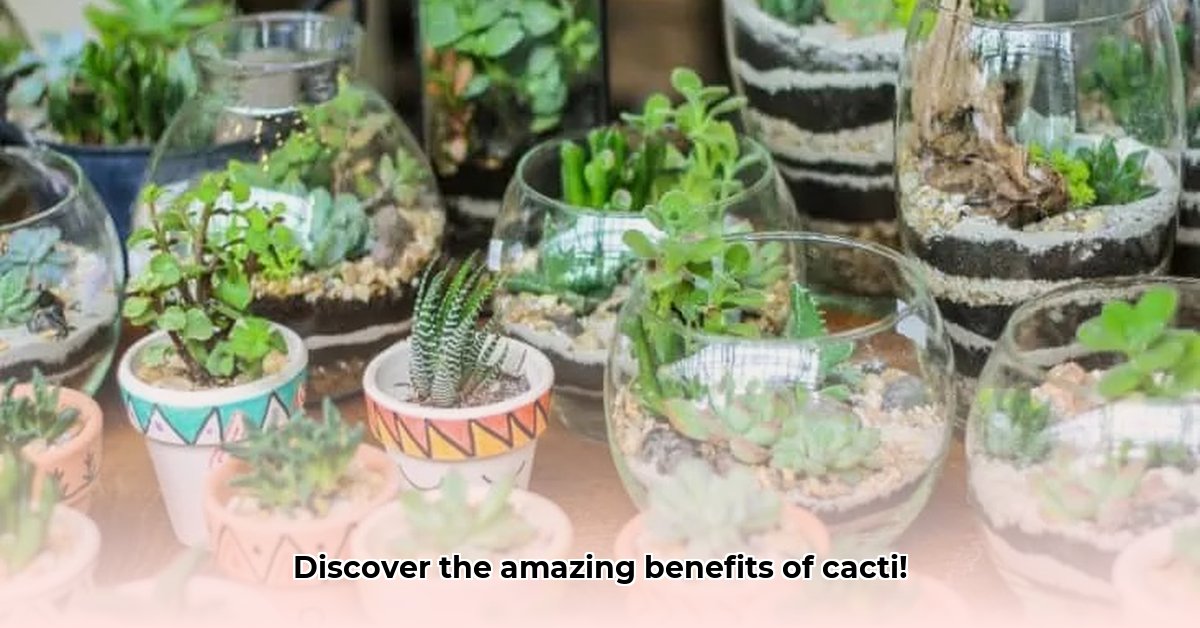
The Amazing World of Cactus Plants: Benefits Galore!
Forget the image of solely prickly desert plants! Cactus plants offer a surprising array of benefits, making them ideal for sustainable farming practices. Their drought resilience is a major advantage, significantly reducing water usage compared to many other crops. This contributes to environmental sustainability and lowers production costs, particularly in arid regions. Many cacti are nutritional powerhouses, brimming with vitamins, minerals, and antioxidants. The prickly pear cactus, for example, is a prime example, boasting a wealth of health benefits. Beyond nutrition, cacti find applications in cosmetics and show significant promise in medicinal uses; ongoing research continues to uncover their therapeutic potential. Economically, cactus cultivation can be quite profitable, providing opportunities for local markets and potential for export, supporting livelihoods in areas traditionally challenged by agricultural limitations. However, challenges remain. Efficient large-scale cultivation, effective processing, and robust market access strategies are crucial for realizing the full economic potential of cactus farming. Scaling production effectively and efficiently navigating market complexities are key considerations.
Cultivating Cactus Plants: Your Step-by-Step Guide to Success
Growing cacti successfully is achievable with a few key steps:
1. Choosing the Right Cactus: Research varieties best suited to your climate and intended use. The prickly pear cactus ( Opuntia species) is a versatile, high-demand option known for its edible fruits and pads (nopales).
2. Preparing the Perfect Soil: Cacti thrive in well-draining, sandy soil. Amend heavy clay soils with sand and compost to improve drainage. Poor drainage can lead to root rot, a common problem for cacti.
3. Planting Your Cactus: Plant your cacti at the same depth they were in their original containers, ensuring enough space for growth. Overcrowding can hinder growth and increase the risk of disease.
4. Watering Wisely: Water deeply but infrequently. Allow the soil to dry out completely between waterings. Overwatering is a frequent mistake leading to root rot. Consider using drip irrigation for efficient water management.
5. Pest and Disease Management: Monitor for pests and diseases. Use integrated pest management techniques, including biological control methods where appropriate, to minimize the need for harmful chemicals.
6. Harvesting Your Bounty: Harvesting methods depend on the cactus species and intended use. For fruits, harvest when fully ripe; for nopales, harvest mature pads carefully. Timely harvesting is crucial for optimal quality and shelf life.
7. Post-Harvest Handling: Proper post-harvest care prevents spoilage. This includes cleaning, sorting, and promptly processing or storing your harvest. Prompt handling minimizes losses and maintains the quality of the harvested materials.
Utilizing Cactus Products: From Kitchen to Cosmetics and Beyond!
Cactus plants and their byproducts have a remarkable range of applications. Prickly pear fruits are versatile ingredients in juices, jams, jellies, and candies. Nopales (cactus pads) are delicious additions to salads, or can be grilled or sautéed. Beyond culinary use, they serve as valuable animal feed, particularly in arid regions. Cactus extracts feature prominently in cosmetics, moisturizing and providing antioxidants for skincare products. Emerging research suggests promising medicinal applications, with potential for pharmaceutical uses in the future.
Addressing Challenges and Risks: A Proactive Approach
While cactus farming offers tremendous potential, challenges exist. Efficient management addresses these effectively:
| Challenge | Mitigation Strategies |
|---|---|
| Water Shortages | Employ drought-resistant varieties and water-efficient irrigation techniques (drip irrigation). |
| Pest and Disease Problems | Implement integrated pest management (IPM) strategies and utilize disease-resistant cultivars. |
| Price Fluctuations | Diversify products (e.g., jams, juices, supplements); secure contracts with buyers. |
| Limited Processing Facilities | Invest in or collaborate with processing facilities; explore value-added processing methods. |
| Low Consumer Awareness | Launch targeted marketing campaigns to highlight the culinary, medicinal, and cosmetic uses. |
By proactively addressing these challenges, we can unlock the full potential of cactus farming.
How to Scale Cactus Farming for Commercial Profit
Key Takeaways:
- High profit margins are achievable, but actual returns depend on factors such as scale of operation and market access.
- Market demand is increasing, fueled by the rising popularity of cacti in landscaping, home décor, and the growing recognition of their nutritional and medicinal value.
- Profitability timelines vary depending on factors such as planning and market research.
- Value-added processing significantly boosts profitability.
- Efficient water management is crucial for sustainable cactus farming.
- Strong relationships with buyers are essential for long-term success.
Dr. Anya Sharma, Plant Science Professor, University of Arizona, emphasizes, "Cactus farming presents a unique opportunity for sustainable and profitable agriculture. Strategic planning, efficient resource management, and innovative marketing are key to success."